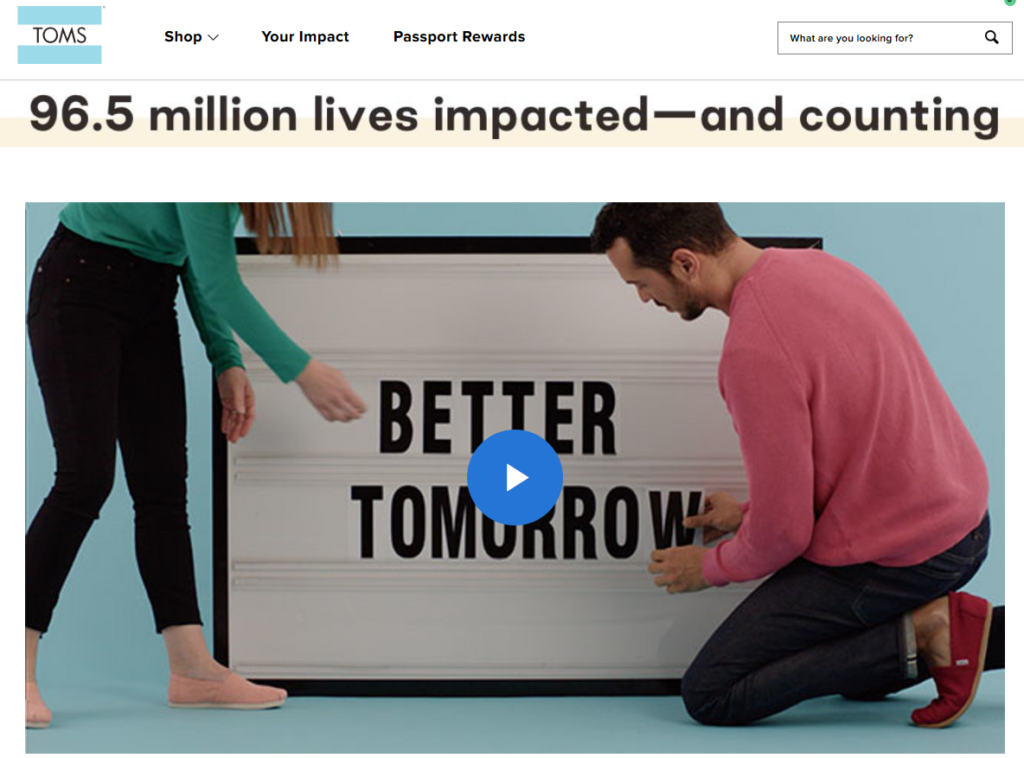
How to Increase Sales Using These Laws of Marketing
You’ve got a winning product. You advertise and promote it and then promote some more. But, after all of that work, your sales are paltry at best. You improve your product, give it a go again, and sales are still lower than expected. What’s going on?
The problem may not actually be your product.
Here’s the thing: You can produce the finest products in your industry, but if you don’t have the right offer and messaging, your sales will remain stagnant.
How to Increase Sales: First Things First
Let’s get one thing straight—if your product isn’t good, it doesn't matter how much time and money you sink into promoting it. Eventually your sales will fall flat, if they ever even materialize.
For the sake of this article, we will assume that your product is great and it solves your customers’ problems. That doesn’t mean that you shouldn’t improve it, but we find that a lot of businesses struggling with sales have a good product; they just don’t understand a couple basic laws of marketing.
In this article, we will break down 3 laws of marketing that drive product sales. If you can grasp these concepts and apply the changes based on what we outline, you will be able to better connect with your target audience and make them an irrefutable offer.
The 3 Laws of Marketing That Drive Sales
In this article, we’ll talk about 3 important laws of marketing:
1. Law of the Unknown
2. Law of Offers
3. Law of Persuasion
Regardless of what you sell (information products, software, services, events, physical products, etc.), you can apply these laws to drive more sales.
Law of the Unknown: You're Selling a Black Box
This first law is more of a foundation upon which the other 2 laws work. The Law of the Unknown plays together with empathy toward your prospective clients and customers (more on this later).
To understand how the Law of the Unknown plays a role in marketing, we need to talk about the “hidden” nature of the internet.
Fifty years ago, if you asked someone if they would spend thousands or even just hundreds of dollars on a product by clicking a few buttons on a screen, they would think you were crazy. Shopping was always a “physical” experience. You would walk into a store, feel the product, try it, talk to the sales associate in real time, and get answers to your questions.
While online shopping has become a staple nowadays, it’s still hard for consumers to trust a brand that they can only interact with in front of a screen. People will arrive to your website feeling skeptical.According to Russ Henneberry—consultant, speaker, and author of Digital Marketing for Dummies—your product is nothing more than a “black box” to consumers. They can’t see inside of it because they have no way to physically interact with it. It doesn’t matter if you are selling digital products, software, physical products, or an event—your product is a mystery if consumers are not physically next to it.

Your beautiful, unique product you spent so much time creating? This is what it looks like to consumers who do not yet trust you.
It’s your job as the marketer to make your product as tangible as possible so consumers trust in your brand and your products.
How do you remove the mystery? Empathize with prospective customers. Put yourself in your target audience’s shoes and look at your brand and products through their perspective, setting aside your own biases and experiences.
If you can successfully remove the mystery, you will destroy the invisible barrier of skepticism between you and your online audience—and sales will come flooding in.
Let’s talk about how to do this, and overcome the Law of the Unknown, with the next law.
Law of Offers: How to Make Your Offer More Compelling
According to Henneberry, your product is not your offer. You only have an offer once you add a price to your product.
If your offer isn’t selling, increasing sales could be as easy as making your offer more compelling. Here are 7 suggestions from Henneberry to make your offer more attractive:
1. Add payment terms. For example, if your product is priced at $1,997, consider offering a 4-payment plan (4 payments of $562.50). It’s not uncommon for marketers to raise the price a little (in this example to $2,250) to offset getting paid over time via a payment-plan option. Your customers can decide which option they want; plus, offering a choice will appeal to people who may not have the funds at the point of purchase.
2. Offer a free trial. The purpose of the free trial is to eliminate risk for the user. Free trials are common when brands sell SaaS (software as a service) with a monthly fee. Free trials are also valuable for products that carry a high risk of return.
3. Offer a product bundle. Bundle your products with other related products. For example, if you’re selling a glass water bottle that is good for the environment, consider bundling it with another bottle or a reusable straw set.
DigitalMarketer runs bundle deals for their certification courses:

4. Hold a flash sale. A flash sale is a limited-time discount, typically a deep one. Any type of business can offer a flash sale, but the most effective ones are those that discount their prices 50% or more. For more information, check out our Ultimate Guide to Running Flash Sales.
5. Give away a bonus. Offer a bonus for a limited time only. The bonus should be something that relates to the product and would be enticing to your target. Make the bonus so sweet that they can’t refuse the offer.
Foundr regularly offers bonuses with their digital courses.

6. Contribute to a charitable cause. If you are affiliated with a charity, offer to give a portion of your profits. TOMS’ success skyrocketed because of their One for One program (when you buy a pair of shoes, they give one away to a child in an underdeveloped country). TOMS has also expanded into eyewear, coffee, bags, and more, all with the sole mission of advancing health, education, and economic opportunity for children and their communities globally. Their brand story focuses on giving to the less fortunate, and this has fueled their success since 2006.

7. Offer a guarantee. The guarantee or refund policy eliminates most of the risk for the buyer. Buyers want to know that if they open that black box and don’t like what’s inside, they’re not stuck with money lost. If you don’t offer a guarantee, consumers may think you are not confident enough in the value of your product or service, and this leads to distrust.
Nutrisystem offers a guarantee on their website:

You may have a compelling offer, but you could still be struggling to get the sales you need to meet your goals and build your business. That brings us to the third law of marketing that will help you overcome your consumers’ “black box” thinking.
Law of Persuasion: How to Create an Irrefutable Offer
The key to getting sales is to get consumers to trust you and feel excited about what’s inside that black box you’re selling. Do this by persuading them with your copy and imagery.
Because your prospective customers are not physically handling your product and offer, your sales copy is all they have to get a better understanding of your offering.
According to Henneberry, the 3 areas of sales copy to focus on can be explained with this acronym: TAP.
Transformation
Authority
Proof
Transformation
How do your products and services transform customers?
If you've ever visited the websites of weight-loss products or plastic surgery clinics, you will have seen the power of transformative marketing in action.

But, you don’t need to be selling plastic surgery to apply these principles to your copy.
Here is another example of a before and after from a grout restoration company:

The reason this type of persuasion is so powerful is because you are painting a picture of what customers’ lives are like now (before state) and what they will be like if they buy your product (after state)—aka, the transformation.
Remember when we talked about empathy? You must know the hearts, minds, and pain points of your prospects to be able to adequately paint a picture of what their after states will look like. If you need more help, check out this resource on creating customer avatars.
People don’t buy products; they buy how your product will make them feel, how it will elevate their status, and how it will solve their problems. If you can show this through your copy and imagery, you will earn their trust—and their money.
The lesson here is to write your copy and add imagery in a way that clearly describes how your product can take prospects from the before state to the after.
Even more important than showing the before is showing the after state in a way that appeals to the prospect. It’s showing them what life can be like in 3 distinct ways—how their status will be elevated and what they can have and tangibly feel.
For example, notice how this Plated ad shows the “after” state of using their product—a beautiful, restaurant-quality meal. This is also evident in their ad copy, “Make dinner memorable,” and the smiling woman, which appeals to the emotions of prospects and paints a picture of joy. The brand is showing how the prospect can cook amazing meals (elevates status and shows what they can have) for less work (solves problem) and it will make them happy (creates a feeling).
Authority
How qualified are you to sell your product? What makes you so special? Why should prospective customers believe what you say about your products?
Consumers will only trust your words if you show them you have the authority to speak them.
This is especially important if you are selling an online course or digital product or service. There are so many scammers running around the web selling information on how to succeed at something they never succeeded at themselves. People arrive to these websites already thinking they are a scam, so you need to do some heavy lifting to convince them otherwise.
Show off your authority and experience to earn trust. Depending on what you sell, some ways you can do this include the following:
- Show a personal picture. If you have a family, show this as well. Websites that do not include photos of people can make consumers skeptical, as they’ll think you are hiding something.
- Include a bio. This is where you want to show off. This is especially important if you are teaching an online course or selling services. Show that you are capable of servicing the prospect and they have a good reason to believe you are the expert.
When people visit our About page, we want them to feel like they can trust us. We are proud of the experience we offer and we want our prospective clients to know that we can take good care of them:

Proof
You can tell people how great you are and even show them what their status and life will be like after buying your products; however, nothing works quite as well as showing proof that what you are saying is actually true. Add proof by showcasing testimonials and reviews from your customers and clients.
Pura Vida publishes online reviews from their customers on their website:

Below are testimonials from Ahrefs’ site. Note how they added the images as well for authenticity.

By far, video testimonials will have the most impact on the prospect. Any brand can fake a written testimonial (they shouldn’t, but it happens), but you can’t fake a video from an actual customer. Here is an example of a video testimonial for yours truly:
How to Increase Sales: What You Need to Know
In this article, we talked about the 3 laws of marketing—Law of the Unknown, Law of Offers, and Law of Persuasion—and how, along with empathy, they can help you drive more sales to your offers.
Some main points to remember:
- The Law of the Unknown states that your customers are looking at your product as a black box they can’t see inside of. This creates skepticism. Your job as marketer is to remove that skepticism with empathy, the right offer, and persuasive copy and imagery.
- The Law of Offers suggest ways to make your offer more compelling. We talked about 7 ways in this article.
- The Law of Persuasion teaches us how to empathize with the prospect by creating persuasive copy and imagery using the TAP acronym (Transformation, Authority, Proof)
Need some help with your marketing so you can increase sales? Whether you are a solo marketer, you need a team of experts, or you just need someone to fill in the gaps to help you drive more revenue, we are here to help. Contact us today for a free consultation so we can get you positioned for immense growth in the coming months.


